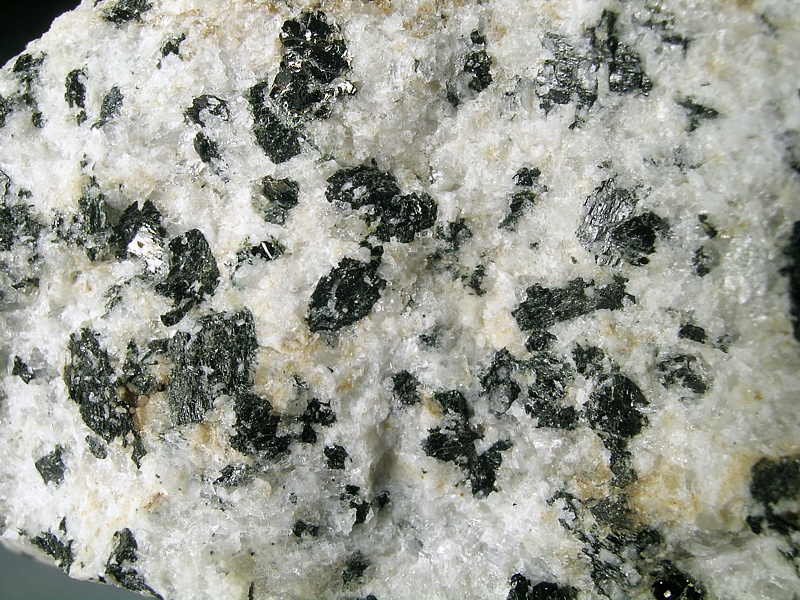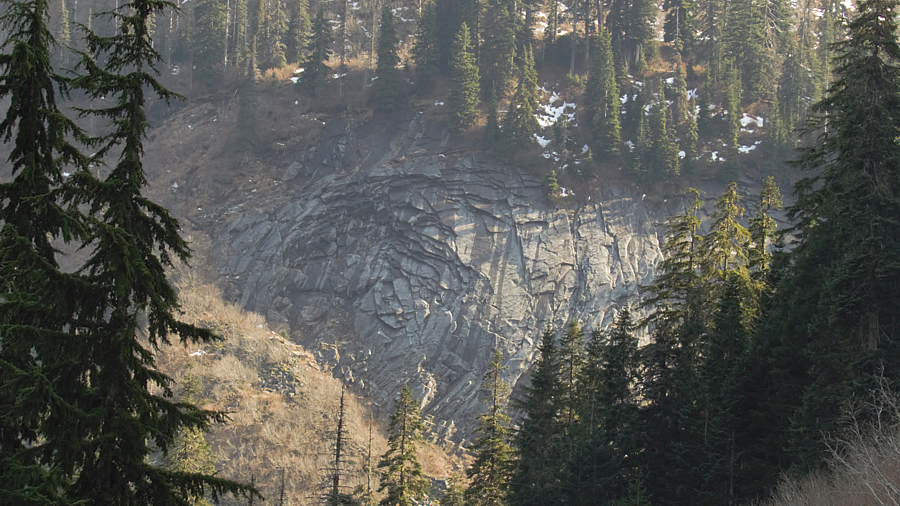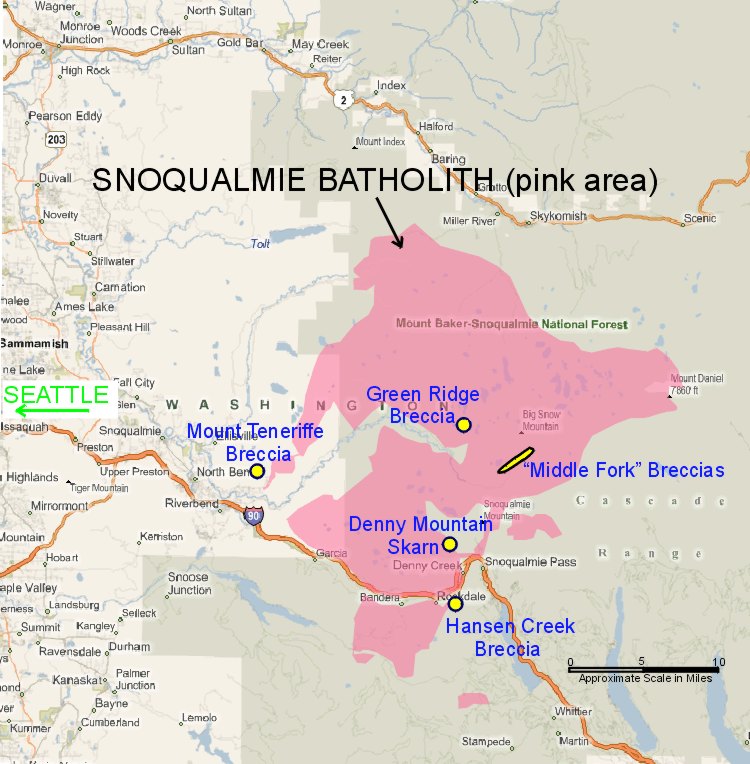|
UNDER CONSTRUCTION as of April 21, 2015 |  |
Snoqualmie Batholith - late Oligocene to early Miocene (28 Ma[million years ago] to 22 Ma). Uplift and erosion of the Old Cascade Volcanic Arc exposed plutonic rock of the Snoqualmie Batholith near Snoqualmie Pass between Interstate 90 and State Highway 2. The batholith consists of at least eight intrusive phases, emplaced at a depth of about 4,000 and 8,000 feet. Intrusive rock types found within the Snoqualmie Batholith range in composition from granite to gabbro. Granodiorite is the most prevalent rock type, making up about 80 percent the batholith (Erikson, 1969). Other lithologies within the batholith include porphyritic dacite, andesite, aplite, and intrusive breccia (Livingston, 1971).

A representative hand-sample of Snoqualmie batholith granodiorite showing the typical salt-and-pepper phaneritic texture of intergrown grains of light-colored plagioclase and quartz and dark-colored biotite and amphibole. Horizontal field of view is approximately 3 cm.

Exfoliation texture of a granodiorite exposure within the Snoqualmie Batholith near the Denny Creek Skarn. Exfoliation results when rocks formed at depth are exposed at the ground surface; the previous compressional forces would decrease and thus allow the rock to expand by fracturing parallel to the surface.

Source: Generalized Geologic Maps of the Skykomish River and Snoqualmie Pass 1:100,000 Quadrangles. Base Map from Microsoft Virtual Earth.
Erikson, E. H. (1969). Petrology of the composite Snoqualmie batholith, Central Cascade mountains, Washington. Geological Society of America Bulletin 80, Pages 2213-2236.
Livingston, Vaughn E., (1971) Geology and Mineral Resources of King County, Washington, USA. Bulletin - Division of Mines and Geology (State of Washington) 63, Pages 200.

